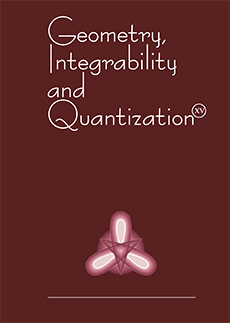Abstract
Recently – via a simple trick, amounting essentially to a change of independent, and possibly as well of dependent, variables – the possibility has been noted to modify a quite general evolution system so that the modified system possess a lot of completely periodic, indeed isochronous, solutions. Generally these isochronous solutions emerge out of an open domain of initial data having full dimensionality in the space of initial data. And many of the isochronous systems obtained in this manner seem rather interesting. In this paper these developments are reviewed, mainly in the context of dynamical systems (systems of ODEs – in particular, systems interpretable as many-body problems), and some specific examples are discussed in detail, including an analysis of the transition (to motions with higher periods, or aperiodic, or perhaps chaotic) occurring when the initial data get outside of the region producing isochronous motions. The applicability of this approach in the context of nonlinear evolution PDEs is also outlined.
Information
Digital Object Identifier: 10.7546/giq-6-2005-11-61


